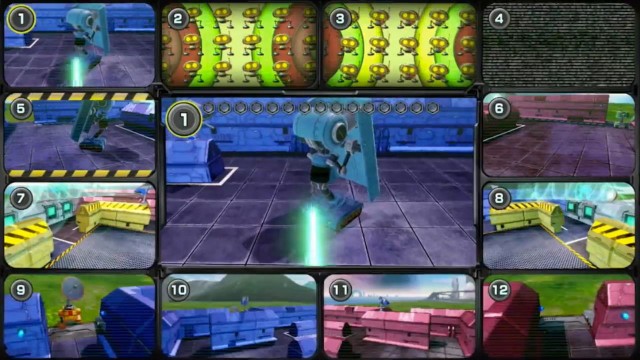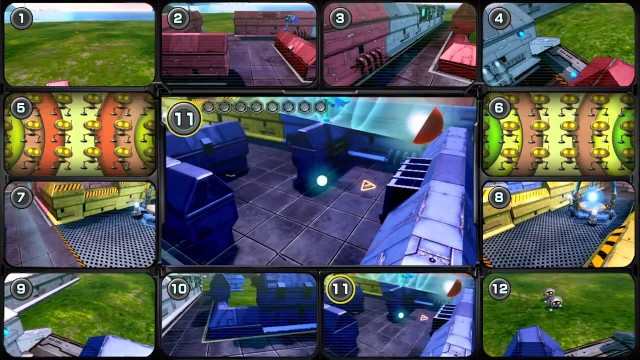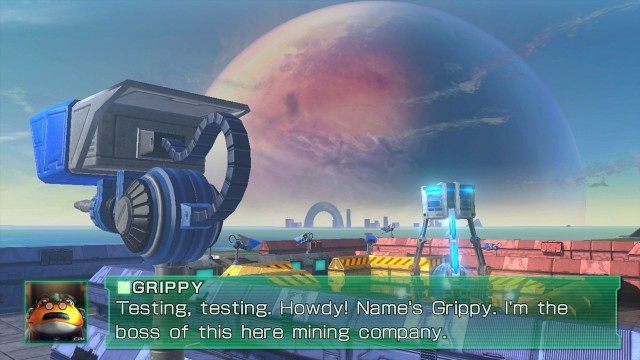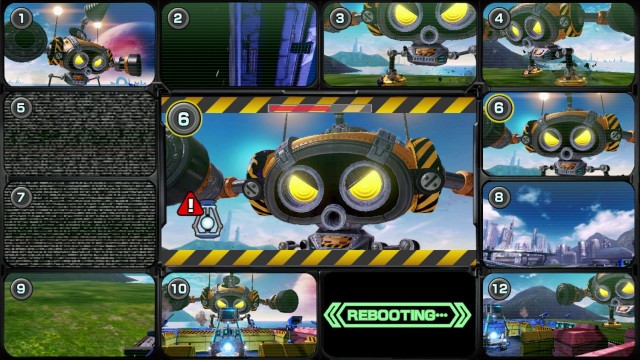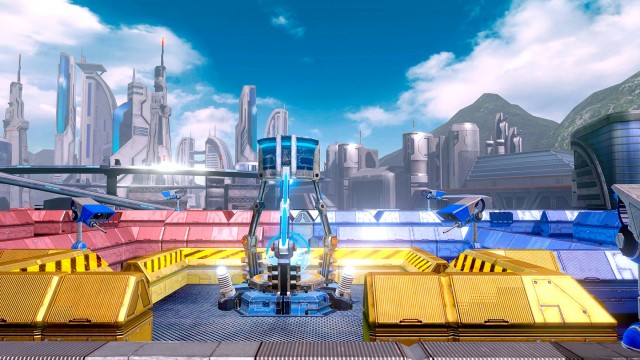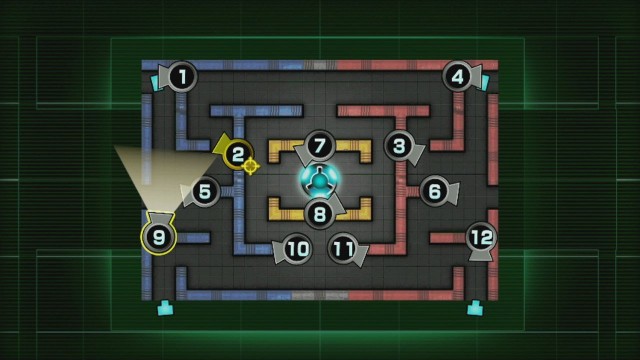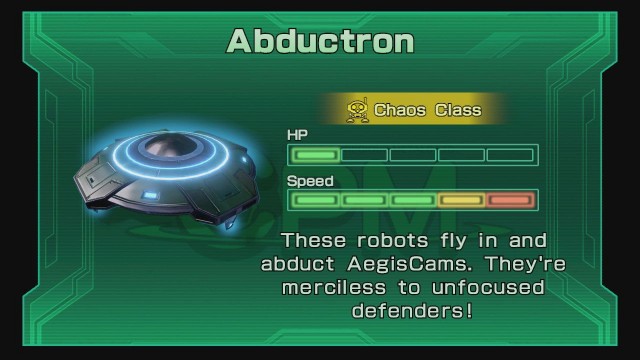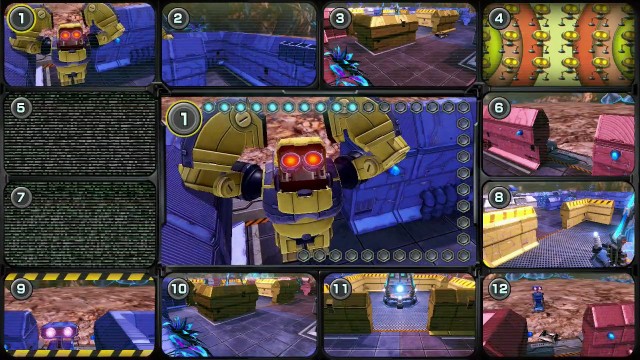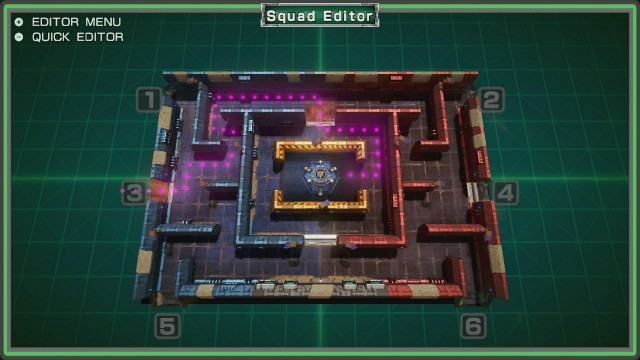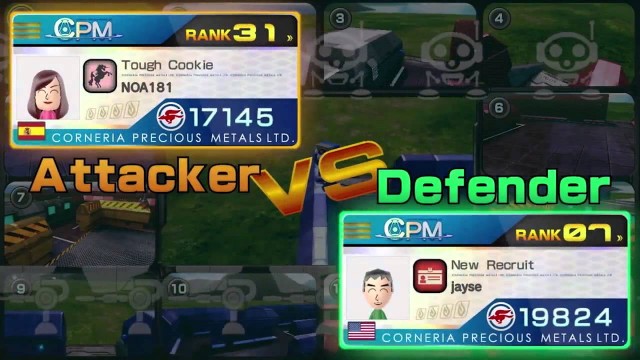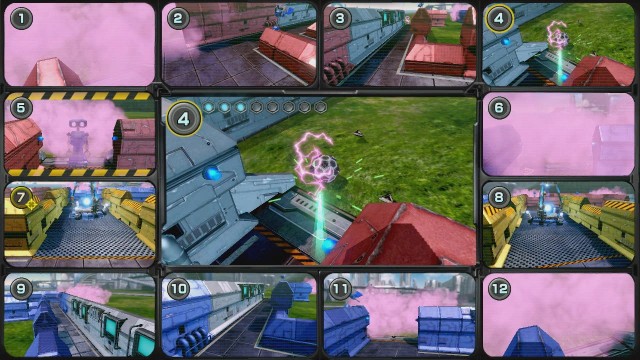Star Fox Zero has been divisive to say the least, but the package was no doubt sweetened by the inclusion of a bonus game, Star Fox Guard, which was announced as a pack-in offering mere weeks before Star Fox Zero was set to finally launch. Packaged directly with Star Fox Zero at retail, and given a $10 discount if you buy a digital copy of Star Fox Zero from the Wii U eShop (the same discount is applied to a digital copy of Star Fox Zero, if you instead buy Star Fox Guard from the Wii U eShop first), Star Fox Guard could have easily been a small bonus minigame in Star Fox Zero and called it a day, but Nintendo has gone the extra mile to turn it into a full-fledged experience, albeit one that’s on a noticeably smaller scale than Star Fox Zero.
What may shock people more than the Star Fox brand being applied to a cutesy tower defense game however is that Star Fox Guard is actually a better, more enjoyable game than Star Fox Zero can sometimes be! Star Fox Zero is still good, provided that you have the patience to master its controls, but Star Fox Guard feels a little more fine-tuned, a little more addictive, and definitely more fun overall. Somehow, this is the Star Fox game for Wii U that feels like it ended up with more gameplay polish, which is certainly odd, though that does make it an especially satisfying bonus for Star Fox Zero purchasers.
Star Fox Guard even manages to find its own especially inspired spin on the Wii U’s unique capabilities, much as Star Fox Zero strived to do with more mixed effect, and while it’s certainly not the most challenging tower defense game around, it’s definitely one of the most creative and enjoyable ones! The fact that the game so expertly makes use of the Wii U’s capabilities might not come as a surprise to those who know its origins, as it’s a fully-realized version of Wii U tech demo, Project Guard from E3 2014, but the fun use of the Wii U’s asymmetric capabilities is still very commendable, and surprisingly manages to sell the unique appeal of Wii U-specific gameplay better than Star Fox Zero ultimately does.
Star Fox Zero was already one of the more visually modest Wii U games to release in recent months, and Star Fox Guard’s graphics aren’t really any more noteworthy here. As with Star Fox Zero, the game upscales to 1080p, but doesn’t run natively at that resolution, being closer to 720p. The performance is also a lot slower, especially since you view everything from static camera images, so the slick 60fps framerate from Star Fox Zero definitely doesn’t seem to have been replicated in Star Fox Guard, though in fairness, this game doesn’t really need to run at 60fps to animate or handle well.
Star Fox Guard is also put together on the same engine as Star Fox Zero, which means that certain character models and environmental assets from Star Fox Zero are re-used completely for Star Fox Guard, likely to accommodate the game’s small development cycle. The enemy robots however are entirely new, with the basic ones also being taken from that Project Guard tech demo that was shown at E3 2014. This explains why the robots are very charming and cute-looking, seemingly at odds with the more menacing machines that normally appear in the Star Fox universe.
Despite the modest production values though, Star Fox Guard looks fine, if a little basic. It definitely won’t raise the bar for Wii U visuals, but that’s predictable for a smaller-scale game like this. The game’s reduced framerate lends well to the slower, more strategic pace of the game, and that recognizable Nintendo charm is still present throughout every element of the game’s visual design. Even the re-used environmental assets and such aren’t too bothersome, since it helps to root the game in the same setting as Star Fox Zero, even if from a very different angle.
Of course, the real draw with the visuals in Star Fox Guard is the clever way that the asymmetric screen layout is used between the television and the Wii U Gamepad. This is incredibly creative, as the television screen is divided between twelve different monitors, and players use the stylus and the Wii U Gamepad Screen to switch between viewpoints in a larger central area, while using their peripheral vision to keep an eye on the other monitors surrounding the outer layer of the television. It’s an engaging challenge to try and keep tabs on everything that’s going on in your base, and the fact that the Wii U Gamepad Screen doubles as a radar, as well as an overview of where your cameras are, is helpful, and assists the control scheme in remaining intuitive and memorable.
Still, Star Fox Guard’s hasty development as a pack-in game, or potentially a standalone Wii U eShop bonus, depending on your purchase method of Star Fox Zero, is often evident in the straightforward presentation. The Nintendo charm is there, but there isn’t a whole lot of flair to the production. Again, considering that this is primarily meant to be a bonus game to go along with Star Fox Zero, this somewhat bland, recycled presentation is kind of forgivable, but that doesn’t change the fact that Star Fox Guard aims a bit low from a visual standpoint.
Much like the visuals, the audio in Star Fox Guard is pretty modest. The cute, upbeat music works as a set of canned Nintendo tunes, but the music obviously doesn’t carry quite the same impact as some of this franchise’s favourite compositions in games like Star Fox and Star Fox 64. Star Fox Guard may be a very different game than the series’ mainline offerings, and there’s something to be said about the music not being intrusive to the gameplay experience, but as far as Star Fox soundtracks go, this is easily the series’ blandest, and feels barely present.
The sound effects at least turned out a little better, even if they also are rather on the simple side. Sounds like the explosions of destroyed robots and the static of deactivated cameras work well, and the way that the game uses audio cues to warn you about enemies infiltrating your base, and nearing the mineral deposit that you’re supposed to be defending, is done pretty well, helping you to manage some of the visual chaos that often occurs in Star Fox Guard’s more challenging stages. As with the music and visuals, the sound doesn’t carry a lot of fanfare, and is rather perfunctory, but it gets the job done.
There’s a bit of voice acting in the game, utilizing the same actors as returning characters from Star Fox Zero, though unfortunately, most of the voice work you’ll be hearing is from Slippy Toad, who still sounds pretty annoying. Slippy’s uncle, Grippy has a decent amount of personality, but like so many other things in Star Fox Guard, the voice acting goes for par, and doesn’t aim much higher. Some of the late game twists introduce other characters that are a little more engaging, and come closer to replicating that cheesy charm behind most of the Star Fox series’ voiceovers, but much of the voiceover work comes from canned victory or defeat lines, whenever you’re not hearing a robot voice telling you that your base and minerals are in danger, anyway.
Star Fox Guard takes the basic idea of the Project Guard demo, and largely maintains it, but adds in a series of different base layouts, new enemies, and of course, a Star Fox backdrop. The game is basic, but it’s quite fun, succeeding as both a creative new way to play for tower defense veterans, while also providing a solid introduction to the genre for young or inexperienced players.
Star Fox Guard isn’t just a tower defense game though. It’s also something of a multi-view shooter, giving it a bit of a Star Fox flavour beyond the setting, as players merely dictate where their cameras are placed, without actually outfitting their base with any automated defenses. Players have to control every defense directly, switching between them by tapping different cameras to view through and control using the Wii U Gamepad Screen, and they’ll have to shoot and destroy any invading robots themselves, which can be done with any face button or shoulder button/trigger on the Wii U Gamepad.
Obviously, the way that the game is set up means that off-TV play isn’t an option in Star Fox Guard, nor is using any other control method beyond the Wii U Gamepad, so you’re stuck with the Wii U’s eccentric default controller for this game. Still, the Wii U Gamepad controls are plenty comfortable, and work rather well, though shooting with the face buttons is definitely preferable to shooting with the triggers, which can be hard on your fingers during extended play. Using the stylus alongside the sticks and buttons on the Wii U Gamepad can be a bit tricky too, and if you’re prone to dropping your stylus, you might prefer to just use your index finger to switch camera views on the Wii U Gamepad Screen. Even then though, the Wii U Gamepad Screen doesn’t always perfectly detect when you’re tapping a new camera view with your finger, which can be trouble during more challenging stages, when quickly switching between multiple viewpoints is necessary to fend off a relentless swarm of robots.
For the first half of the main missions though, Star Fox Guard is rather simple, sometimes to a fault. The premise behind the game is very straightforward; You’ve been contracted by Star Fox member, Slippy Toad’s uncle, Grippy Toad, to help him mine precious metals from several planets throughout the Lylat System. Trouble comes however, when legions of mysterious robots begin going after the minerals that Grippy has salvaged! Thankfully, a defense grid set up by Slippy can be used to help repel the robots. The player’s job, as an employee of Grippy’s that’s monitoring the base from the company headquarters on Corneria (you effectively play as yourself, since you’re represented by your Mii), is to use Slippy’s defenses to spot and destroy the invading robots, as they attempt to infiltrate the base. If a robot manages to reach and attack the mineral deposit even once, the mission is a failure, and you’ll have to start over.
While the lack of automated defenses and the one-and-done lack of stamina behind the minerals you’re guarding can sound intimidating at first, it’s not hard to get a handle on how to play Star Fox Guard, especially in the early stages. Before each mission, you’ll get a chance to drag and drop the twelve available cameras around your base, to give yourself the best odds of spotting enemy threats. Early in the game, these simply include small, virtually defenseless robots, with the more clever and outfitted robots being reserved for later worlds and missions.
Enemy robots come in two varieties in Star Fox Guard; Combat-types, which rush for the minerals and try to attack them, and Chaos-types, which cause distractions and hurt your chances of stopping the Combat-type robots. On any given mission, your job is to completely destroy all of the Combat-type robots, with the Chaos-type robots being optional. If you destroy all of the Combat-type robots, then any remaining Chaos-type robots will flee, and the mission will be a success.
While it’s often a good idea to prioritize Combat-type robots to succeed, destroying any robot will net you additional Precious Metals, which are awarded to you as a bonus upon successfully completing each mission. If you destroy all of the Chaos-type robots as well as all of the Combat-type robots, you’ll earn bonus Precious Metals and a ‘Perfect Guard’ rating, with bonus Precious Metals also being awarded for feats like successfully destroying a robot from a distant camera, or just barely destroying a robot before it hits your mineral deposit, among a couple of other things. The Precious Metals work as an EXP-like system, gradually unlocking things as you ‘Rank Up’, including optional Extra Missions, which provide especially challenging and devious enemy forces to contend with, as well as upgrades to your defenses, namely by allowing you to upgrade cameras with capabilities like locking on to enemies, slowing down time, freezing enemies in place, and more.
As you play on, Star Fox Guard becomes more intense, but also more fun and satisfying. The game has a good learning curve that gets you used to the lesser enemies, before throwing especially tricky foes at you later on. The enemy variety in Star Fox Guard is pretty good as well, with the simple early enemies eventually giving way to enemies that carry shields which block direct attacks, enemies that are invisible on your Wii U Gamepad Screen’s radar, enemies that fly, enemies that feed your cameras fake footage, and even enemies that steal your cameras and try to run off with them, among other varieties. Gradually facing these new and interesting threats is a big part of what makes Star Fox Guard so entertaining, despite its modest presentation and small scale. The game even sports boss battles, forcing you to really think on your feet to protect your vulnerable mineral supply, especially with no real base defenses in that case. Some bosses will even spawn regular enemies to contend with on top of the boss itself, making these battles especially challenging, and especially gratifying to win!
The main missions of Star Fox Guard aren’t too challenging, especially for more hardcore tower defense players, and can be fully beaten in about 4-5 hours, but the extra missions nicely make up for that, putting players’ skills to the test in all sorts of tricky, overwhelming ways. Many of these extra missions can’t even be accessed with a straight run-through of the main game, and you’ll need to keep building up your Rank to unlock them all. This provides a lot to strive for as you play, since completing all of Star Fox Guard’s 100 or so missions is a pretty trying task. Fortunately, accomplishing special feats in various missions and boss fights can also grant you the chance to put special symbols on your game profile, which is a decent substitute for the Wii U’s lack of an achievement system, when you’re playing online.
If you happen to own a Fox or Falco Amiibo figure, you can also get yourself out of a jam once per day by scanning either one on the Wii U Gamepad’s NFC Reader, which causes the Star Fox team to fly down and enact an air strike on the enemy robots, obliterating them. This is a good trump card for the Extra Missions, especially when you’re truly desperate, and the once-per-day-limit does nicely prevent you from abusing the feature. You can certainly get through the entire game, Extra Missions and all, by never relying on these Amiibo figures, but for those that own one or both of them, this is still an appreciated use of both, after Star Fox Zero also made use of them in a different way.
Yes, despite Star Fox Zero not having any kind of multiplayer element beyond local co-op play, Star Fox Guard, amazingly, has more than one element of online gameplay! How this works is, when you activate the game’s Nintendo Network features, you can participate in a mode called ‘World Rivals’, which allows you to defend against customized robot squadrons made by other Star Fox Guard players from around the world. Successful and failed defenses are recorded in your Player Rankings, and this allows players to keep playing and enjoying the experience, even if they’ve exhausted all of the developer-made missions in Star Fox Guard, including the Extra Missions.
Of course, players can also customize their own enemy behaviour and setups, then sic them on other players when they access the World Rivals mode, so long as your Wii U is connected to the internet. Wins and losses for your custom robot squad are recorded without the player’s direct input, just as with defending against other players’ attacks, and while there’s no ability to control the robots directly when invading other players’ bases, which is largely automated and happens when you’re not actually playing the game, the editing suite provides an interesting new way to master Star Fox Guard, after you’ve learned everything there is about defense.
Star Fox Guard’s simplicity does hold its gameplay back sometimes, but unlike Star Fox Zero, which tried a lot of novel and advanced gameplay alterations to mixed effect, Star Fox Guard offers a simple idea, then does it rather well. It recalls the old adage of it being better to do the simple stuff well than the advanced stuff poorly, and while Star Fox Zero isn’t a poor game, it is undeniably a disappointing one. Star Fox Guard however comes as a pleasant surprise, defying its basic production values and minimalist presentation to be surprisingly fun and addictive, as well as ultimately the cooler unique use of the Wii U’s asymmetric gameplay capabilities between the two Star Fox games that are now on offer for Nintendo’s current console.
Star Fox Guard is a merely decent standalone release, especially for the somewhat steep price of $19.99 to grab separately on the Wii U eShop, but as a pack-in game with Star Fox Zero, Star Fox Guard is a surprising treat, and one that many players are bound to have fun with. Even the Wii U eShop discount down to $9.99 after buying Star Fox Zero digitally from the Wii U eShop isn’t a bad value for Star Fox Guard, which doesn’t come in a large package, but makes up for it with an effortless tendency to be addictive and enjoyable.
Star Fox Guard still doesn’t ultimately raise the bar for Wii U game design, as creative as it is, but in terms of creating an experience that only the Wii U can pull off, and isn’t truly possible on competing game platforms, it’s a successful little experiment that will put a smile on your face. If you enjoy tower defense games, Star Fox Guard won’t become your new favourite, but it will be among the tower defense offerings that you most fondly remember from this hardware generation.
Even if you have little to no experience with tower defense games, Star Fox Guard is worth trying out, since it makes for a good way to get your feet wet with the genre, and even beyond this specialty genre, the game simply presents a fun, well-realized idea overall. It’s not a large idea, but it’s a well-realized one, and that’s what counts most. This game won’t change that many people are coming to the Star Fox series’ Wii U debut for Star Fox Zero, granted, but even if you come for Star Fox Zero, you’ll likely stay for Star Fox Guard.


